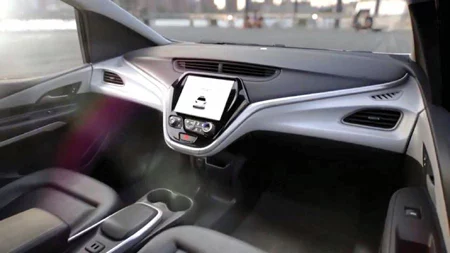Article by Dr Moonyati Mohd Yatid which appeared in New Straits Times, 15 May 2018
AS we welcome technology into our lives, so does the trust placed in them, whether we realise it or not. However, when it involves a high-stakes game, such as the Autonomous Vehicles (AV) technology, where the result of a software error could mean chaos — involving injuries, even deaths — then trust is not so easily given.
Although the development of AV technology has been positive, social acceptance remains low. According to a study by the Massachusetts Institute of Technology (MIT), 48 per cent of the survey respondents would not buy a self-driving car, top reasons being safety concerns and lack of trust in the technology. Ironically, statistics from various studies show that vehicle crashes is actually a manmade crisis.
High expectations are being put on AVs which influence human trust in the technology, especially due to the differences in the way machines and human drivers operate. In times of crisis, a human’s limited information processing capability is the root cause of human errors. AVs on the other hand, break down due to feature failures, for instance Tesla’s autopilot feature that failed to register a trailer against the bright sky, and when neither the machine nor the driver applied the car’s brakes, rammed into the trailer.
Trust is built on two major components — security and ethics. Thus, besides security concerns mentioned, AVs response to accidents in “deciding” on who will be saved (based on how it is programmed), has provoked criticisms and ethical issues on how AVs will prioritise human lives during accidents. For instance, whether it will prioritise its passengers over others outside the car.
Further, some critics argue that adoption of the technologies needs to also consider the meaning of ethics in local context, for instance, what works for the west might not work in Asean.
The challenges in AVs depend on the level of automation of AV vehicles. In terms of partially automated AVs, the challenge is to integrate manual driving when human intervention is required. Humans tend to lose focus as they increasingly depend on automation, as discovered in Google’s self-driving car project. Hence, focus on Human-Machine Interface (HMI) is critical to ensure that human drivers are able to quickly gain control of a moving vehicle during an emergency.
In terms of creating trust in fully automated AVs, functions and aesthetics that make them more “human” is key. It is not surprising that humans are more acceptable of robots that have a human character, such as figure and name, as described by a Japanese researcher Professor Masahiro Mori in 1970s. He argued that if a robot resembles a human, then there is tendency to acknowledge its presence in the same way as we would that of a human being.
Further, reports have indicated that AVs were involved in accidents because they drive “too well”, a “peculiar” behaviour which confused human drivers on the road causing collisions. Lastly, to be able to “think” like humans, AV technology could insert “common sense” and the capability to instantly deal with new situations, just like how humans understand the world. This new approach to artificial intelligence (AI) which apply ideas from cognitive psychology, allow AVs to recognise and respond to unfamiliar and complex scenarios on the road.
Moreover, efforts need to be done in stages to create trust, and it should not be rushed. Allow time for technology to advance, be tested and have a proven safety record. Allow time for rules and regulations to take place, especially to ensure safety requirements. Most importantly, allow time for humans to sink in the idea of driverless vehicles, just like how they took time in accepting driverless elevators in 1900, which was completely dreaded when it was first introduced. In Malaysia, there are several initiatives contributing positively to the development of AV vehicles. Researchers from Universiti Teknology Malaysia for instance, who have been researching in the field since 2012, successfully exhibited Malaysia’s first driverless vehicle with full automation to the public in early 2018.
Other key players include the Perbadanan Kemajuan Negeri Perak through the NXGV25 project, which aims to expedite the adoption of Connected Autonomous Vehicles in Malaysia and Southeast Asia by 2025, as well as Malaysia’s homegrown company REKA, who started developing their technologies about two years ago, is continuously advancing its own self-driving technology and is progressing towards commercialising self-driving cars.
With the change of government in Malaysia recently, it is intriguing to see the new leaders’ aspirations and strategies in advancing technology in Malaysia, specifically AV technology. Would there be changes to support the development of infrastructure, resources, or perhaps attractive incentives to boost the industry? Further, how much would AV technology reshape or influence the definition of future transportation in Malaysia, especially in urban areas that would soon be overcrowded?
Moving forward, the issue of trust needs to be explored hand-in-hand with the technical aspects of AV to ensure user acceptance so that the vehicles could be fully utilised on Malaysian roads. As discovered by the Nobel Prize winner Daniel Kahneman, humans are not rational creatures, nor do they rely on statistics to make decisions, but rather, on instinct. Thus, building user trust in AV is hugely dependant on its ability to allow humans to “feel” safe. The writer is a senior analyst, Technology, Innovation, Environment and Sustainability (TIES) Department, Institute of Strategic and International Studies (ISIS) Malaysia





